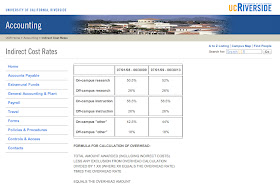AFRI-NIFA-USDA
Agriculture and Food Research Initiative
National Institute of Food and Agriculture
United States Department of Agriculture
~~
As you know, Dear Readers, Monday is soap opera & bonbon day because there's no work to do after the weekend. Therefore, I've had a few minutes to poke into the potato blight issue.
Late blight is the potato blight of potato famine fame. That infallible source, Wikipedia, has a decent entry on late blight. Note that this pathogen can also affect relatives of potatoes, including tomatoes. As I cannot imagine a world without potatoes, I take this issue seriously. And I support efforts to learn more about it blah blah blah ... but wouldn't go so far as to want a genetically modified potato on the farm.
That said...
Welcome to USA blight, a new national website that will act as an information portal on late blight. You can report disease occurrences, submit a sample online, observe disease occurrence maps, and sign up for text disease alerts. There are also useful links to a decision support system, and information about identification and management of the disease.
Late blight of potato and tomato caused by Phytophthora infestans is a devastating disease worldwide and led to the Irish potato famine in 1845. Under favorable weather conditions, tomato and potato crops can be destroyed within days. Yield losses caused by late blight and the cost of control measures have been estimated to exceed 6.7 billion dollars annually and the disease is a major threat to food security worldwide.
You may be curious to know how a national website differs from... what?... . A national web site means you & I are paying for it.
Here's the comic book version of how this works. Twelve people from seven universities and one government agency get together and write and submit a grant proposal to AFRI-NIFA-USDA.
[AFRI-NIFA-USDA
Agriculture and Food Research Initiative
National Institute of Food and Agriculture
United States Department of Agriculture]
The title of the proposal is REDUCING LOSSES TO POTATO AND TOMATO LATE BLIGHT BY MONITORING PATHOGEN POPULATIONS, IMPROVED RESISTANT PLANTS, EDUCATION, AND EXTENSION. From the Objectives section of the abstract of the grant proposal, the full text of which is here:
By the end of year 1, a national website that incorporates a Decision Support System for growers will be developed.
The grant gets funded to the tune of a couple of million dollars.
Although the press release says 9M.
There are two points I want to make here: Big Government; Big Universities. The PI-- Principal Investigator-- on this grant is at UC Riverside. The indirect costs rate at UC Riverside is 52%.
I really hope we all enjoy the "Welcome to USA Blight" web site that we're paying for.
UPDATE: I just realized I failed to explain indirect costs. I'm far far from knowing exactly how grants work, but my understanding of indirect costs is this. A grant proposal naturally includes a budget of the projected costs of conducting the proposed research. In this case for example, among many other costs, someone has to design and maintain the web site and that someone does not work for free and UC Riverside does not give away server space. The indirect cost is the amount-- over and above the actual proposed budget [UPDATED: which already include payments to UCR]-- that the university charges to administer the grant's funds. So if a researcher at UCR needs $100 to conduct a study, he must ask the funding agency for $152 because $52 goes directly to UCR. Cool huh?
And while we're on the subject, all grants of federal funds are public information. And although some agencies'/universities' grants are easier to find than others, all the information is out there somewhere. It's pretty interesting to see where your tax dollars go!
UPDATE: I just realized I failed to explain indirect costs. I'm far far from knowing exactly how grants work, but my understanding of indirect costs is this. A grant proposal naturally includes a budget of the projected costs of conducting the proposed research. In this case for example, among many other costs, someone has to design and maintain the web site and that someone does not work for free and UC Riverside does not give away server space. The indirect cost is the amount-- over and above the actual proposed budget [UPDATED: which already include payments to UCR]-- that the university charges to administer the grant's funds. So if a researcher at UCR needs $100 to conduct a study, he must ask the funding agency for $152 because $52 goes directly to UCR. Cool huh?
And while we're on the subject, all grants of federal funds are public information. And although some agencies'/universities' grants are easier to find than others, all the information is out there somewhere. It's pretty interesting to see where your tax dollars go!


No comments:
Post a Comment
Be nice. Nothing inappropriate, please.